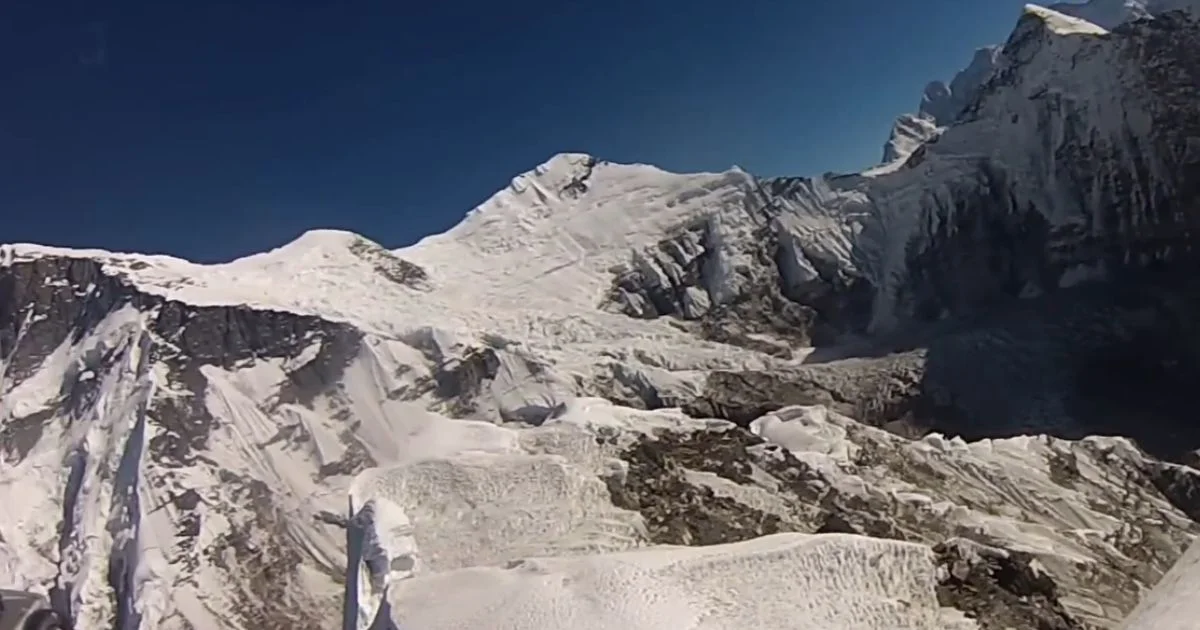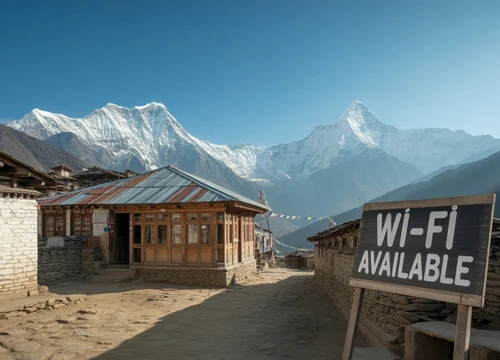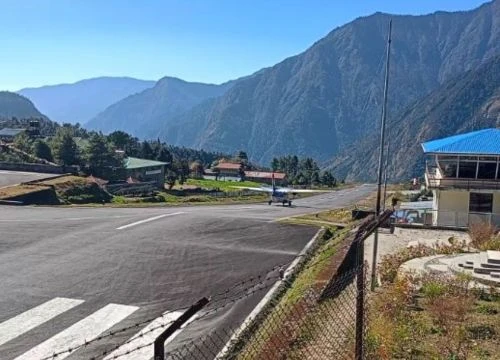Understanding Island Peak & Its Climatic Zones
Island Peak, known as Imja Tse, rises from the heart of the Imja Valley, surrounded by towering giants including Lhotse, Nuptse, and Ama Dablam. Subsequently, this location creates unique weather patterns that climbers must understand for successful ascents. Indeed, this peak in Nepal presents challenges that require careful seasonal planning.
The mountain sits within three distinct climatic zones. Initially, base areas around Dingboche and Chhukung experience monsoon influences during summer months. Next, the intermediate zones between 5,000 and 5,500 metres face rapid weather changes and afternoon cloud build-up. Finally, summit regions above 5,800 metres encounter extreme wind exposure and temperature variations that can drop below -25°C even during favourable seasons.
Additionally, acclimatisation becomes crucial due to these altitude changes. Therefore, most climbers spend 12-14 days trekking from Lukla to Island Peak Base Camp, allowing proper time for acclimatisation to thin air and changing weather patterns. This Island Peak trek serves as essential preparation for the technical challenges ahead.
Moreover, the Khumbu region's unique geography means weather systems move quickly. Specifically, clear morning conditions can deteriorate to whiteout conditions by afternoon, particularly during monsoon and winter months. Consequently, understanding these patterns becomes essential when planning your journey to Island Peak.
Island Peak Climbing Seasons at a Glance
Season | Weather | Difficulty | Visibility | Crowds | Best For |
Spring | Stable, warming | Moderate | Excellent | Moderate | First-timers, photos |
Monsoon | Wet, dangerous | Very High | Poor | Very Low | Experienced only |
Autumn | Clear, cold | Moderate | Outstanding | High | All levels |
Winter | Harsh, technical | Extreme | Variable | Minimal | Experts only |
Seasonal Breakdown - When to Climb Island Peak
Spring Season (March-May): The Golden Window
Spring represents the optimal time to climb the peak for most mountaineers. Initially, March brings the first stable weather windows, though temperatures remain cold with dawn readings around -10°C at base camp. Nevertheless, this marks the beginning of the favorable climbing conditions that make spring so popular.
Furthermore, April offers the most reliable conditions and stands out as an excellent time for attempts. During this period, snow consolidates overnight, creating excellent crampon purchase on summit day. Additionally, daytime temperatures reach comfortable levels for climbing, while morning starts remain crisp and clear. This combination makes April the ideal time for many expeditions.
Meanwhile, May provides the warmest conditions but brings afternoon cloud build-up. Therefore, early morning starts become essential to avoid weather deterioration. Moreover, rhododendrons bloom throughout the approach trek, adding spectacular color to the journey. However, climbers must balance these benefits against increasing weather instability.
Spring Advantages:
Stable weather patterns throughout the season
Moderate temperatures perfect for technical climbing
Excellent visibility for photography and navigation
Fewer avalanche risks compared to winter months
Well-established routes from previous climbers
Best weather conditions for beginners
Spring Challenges:
Increasing afternoon clouds in late May
Growing crowds on popular routes
Higher lodge prices during busy season
Competition for permits and guides
Summer/Monsoon Season (June-August): Expert Territory Only
The monsoon transforms the Island Peak season for climbing island peak into a dangerous undertaking. Specifically, heavy rainfall at lower elevations creates landslide risks along approach trails. Additionally, higher elevations receive substantial snowfall that increases avalanche danger significantly.
Visibility drops dramatically during monsoon months. Consequently, summit views become rare, with clouds obscuring surrounding peaks most days. Furthermore, the famous Everest panorama disappears behind weather systems, reducing the overall climbing experience.
Flight delays at Lukla airport become common, sometimes stranding climbers for days. Subsequently, this creates logistical nightmares for expedition schedules and increases overall costs. Therefore, only the most experienced Himalayan climbers should consider monsoon attempts, and even then, success rates drop below 30%.
Autumn Season (September-November): Peak Conditions
Autumn rivals spring as the best time to climb island peak. Initially, September brings clearing skies after monsoon season ends. Then, October delivers the most stable weather of the entire year, making it a popular time for expeditions. Finally, November sees the first severe cold snaps but offers crystal-clear visibility.
This season for island peak provides the clearest mountain views. Consequently, Everest, Lhotse, Makalu, and Cho Oyu appear in stunning detail from the summit of island peak. Additionally, photography conditions remain excellent throughout daylight hours, making this a favorable time for capturing memorable images.
Moreover, the september to november period represents the peak trekking season when most climbers attempt this 6000m peak. This timing coincides with optimal conditions across the entire peak in the everest region.
Autumn Advantages:
Outstanding visibility and mountain views
Stable weather patterns throughout the season
Comfortable daytime temperatures
Post-monsoon fresh snow conditions
Reliable flight schedules from Kathmandu
Best weather for summit photographs
Autumn Challenges:
High numbers of trekkers and climbers
Crowded teahouses and lodges
Premium pricing during peak season
Competition for climbing permits
Busy routes to reach island peak
Winter Season (December-February): Ultimate Challenge
Winter climbing requires advanced technical skills and extreme cold weather experience. Specifically, temperatures regularly drop below -25°C at summit elevations. Additionally, strong winds create dangerous wind-chill factors that challenge even experienced mountaineers.
Fewer climbers attempt winter ascents, creating isolated conditions. Consequently, emergency rescue becomes complicated due to weather constraints. However, successful winter climbers often describe unparalleled experiences with pristine snow conditions and empty trails. Nevertheless, this remains the most challenging time for peak climbing.
Daylight hours decrease significantly during winter months. Therefore, summit attempts must begin very early to complete climbs in available light. Furthermore, equipment failures become more common in extreme cold, requiring additional climbing gear and backup systems.

Month-by-Month Climbing Conditions
Month | Temperature (Base) | Summit Temp | Weather | Visibility | Difficulty |
January | -20°C to -5°C | -30°C | Harsh, windy | Good | Extreme |
February | -18°C to -3°C | -28°C | Cold, clear | Excellent | Very High |
March | -15°C to 5°C | -25°C | Improving | Very Good | High |
April | -10°C to 10°C | -20°C | Stable | Excellent | Moderate |
May | -5°C to 15°C | -15°C | Warm, cloudy PM | Good | Moderate |
June | 5°C to 20°C | -10°C | Wet, dangerous | Poor | Very High |
July | 8°C to 22°C | -8°C | Monsoon | Very Poor | Extreme |
August | 6°C to 20°C | -10°C | Heavy rain/snow | Poor | Very High |
September | 0°C to 15°C | -18°C | Clearing | Improving | High |
October | -8°C to 12°C | -22°C | Stable | Outstanding | Moderate |
November | -15°C to 8°C | -25°C | Cold, clear | Excellent | High |
December | -18°C to 2°C | -28°C | Harsh | Good | Very High |
Factors That Determine the Best Season
Determining the best time requires careful consideration of multiple factors. Primarily, weather stability ranks as the primary consideration for timing Island Peak attempts. Subsequently, stable high-pressure systems during spring and autumn seasons create predictable conditions that allow proper planning and execution.
Additionally, visibility affects both safety and experience quality. Therefore, clear conditions enable route-finding, hazard identification, and the spectacular summit views that motivate many climbers. Conversely, poor visibility increases objective dangers and reduces climbing satisfaction significantly.
Safety considerations change dramatically between seasons. Specifically, avalanche risks peak during monsoon and early winter when fresh snow accumulates on steep slopes. Meanwhile, crevasse conditions vary as glaciers shift with seasonal temperature changes.
Furthermore, flight reliability at Lukla Airport influences expedition timing. Consequently, spring and autumn offer the most consistent flight schedules, while monsoon and winter create frequent delays that disrupt island peak climbing itinerary plans.
Climbing Conditions & Technical Difficulty by Season
Ice and snow conditions vary significantly across seasons, affecting technical difficulty and equipment requirements. Initially, spring conditions typically offer consolidated snow that provides excellent crampon purchase and secure ice axe placements for the climb to the summit.
Summer monsoon deposits fresh snow that remains unconsolidated and dangerous. Subsequently, hidden crevasses become more common as snow bridges weaken under temperature fluctuations. This creates additional challenges for those attempting to reach the island peak during this period.
Autumn brings ideal snow conditions after monsoon moisture consolidates. Early autumn provides soft snow for comfortable camping, while late autumn creates harder conditions requiring technical ice climbing skills. This makes it the besttime for Island Peak climbing.
Winter presents extreme technical challenges for the climb of Island Peak. Deep powder snow requires trail-breaking efforts, while ice becomes brittle and unpredictable. Additionally, equipment failures increase due to extreme temperatures.
Essential Gear by Season:
Spring/Autumn Standard Kit:
Mountaineering boots rated to -25°C
12-point crampons for technical sections
Ice axe (60-70cm length) for safety
Dynamic climbing rope for protection
Helmet and harness for rock climbing sections
Layered clothing system for temperature variations
Winter Additional Requirements:
Insulated boots rated to -40°C
Face protection and goggles for wind protection
Emergency bivouac equipment for emergencies
Additional insulation layers for extreme cold
Backup equipment for potential failures

Island Peak as a Training Ground
Island Peak serves as a popular training peak for mountaineers preparing for higher objectives. Furthermore, it's used as a training peak by climbers attempting to climb Mount Everest due to its technical requirements and altitude. Additionally, many expeditions utilize it as a training peak for mountaineers attempting 8,000-metre peaks.
The mountain remains a popular training peak because it combines technical ice climbing with high-altitude experience. Consequently, climbers can test their skills and equipment in a challenging but manageable environment. This makes the trek to Island Peak valuable preparation for bigger objectives.
Moreover, the Island Peak climbing expedition provides essential experience with:
High-altitude acclimatisation protocols
Technical ice climbing techniques
Team dynamics in challenging conditions
Equipment testing under real conditions
Weather decision-making skills
Real-World Insights from previous Expeditions
Guiding Island Peak for over a decade has revealed critical timing strategies. For example, the third week of April, typically between April 18 and 22, benefits from a northward jet stream shift, creating a stable weather window with summit success rates reaching 85%, compared to 60% earlier in the month.
Moreover, morning temperatures at Chhukung Base Camp are a key indicator: when they exceed -8°C in April or October, the probability of afternoon weather deterioration rises to 70%. Therefore, by monitoring a calibrated thermometer at 5:30 AM and starting summit attempts at 1:00 AM instead of 2:30 AM when temperatures reach -7°C or warmer, I have avoided four hazardous descents.
In addition, in October, intense UV radiation due to clear skies requires glacier glasses from 4,900 metres, rather than the usual 5,500 metres, preventing snow blindness in seven clients. Finally, rope-fixing adjustments also vary by season: in spring, with overnight lows below -15°C at base camp, fix ropes at 2:00 AM for optimal snow bridge stability. Conversely, in autumn, when lows exceed -12°C, wait until 3:30 AM for post-monsoon snow consolidation.
Cultural & Regional Insights
Sherpa culture deeply influences climbing seasons in the Khumbu region. Additionally, traditional festivals align with seasonal changes that affect local availability and lodge operations. Therefore, understanding these cultural patterns enhances the overall climbing experience.
The Mani Rimdu festival at Tengboche Monastery occurs during autumn (October/November), creating cultural richness for climbers but also increased accommodation demand. Meanwhile, spring festivals celebrate the end of winter, bringing community celebrations to mountain villages along the route to Island Peak.
Local guides and porters prefer spring and autumn work due to comfortable conditions and reliable weather. Furthermore, their expertise becomes invaluable for route-finding and safety decisions during optimal climbing seasons. This local knowledge significantly improves chances for a successful climb.
Village life in Dingboche, Chhukung, and surrounding settlements revolves around trekking and climbing seasons. Subsequently, local businesses prepare extensively for spring and autumn rushes while many close during harsh winter months. This affects logistics for those planning to climb Island Peak in Nepal.
Practical Preparation Tips by Season
Spring Preparation
Pack for temperature ranges from -20°C to +15°C throughout your expedition. Additionally, include sun protection for intense high-altitude UV exposure. Furthermore, prepare for muddy lower-elevation trails as melting snow creates challenging trekking conditions during the approach to reach Island Peak.
Autumn Preparation
Focus on layering systems for rapid temperature changes during your time to climb the island. Additionally, carry extra insulation for increasingly cold nights. Moreover, plan for dry conditions with minimal precipitation but maximum UV exposure at altitude.
Winter Preparation
Emphasise extreme cold weather gear testing before departure. Furthermore, include backup equipment for potential failures in harsh conditions. Additionally, plan extended timelines for weather delays and harsh conditions that may affect your climbing guide schedule.
Food availability varies significantly by season. Spring and autumn offer full menus at tea houses, while winter operations may be limited. Therefore, carry additional high-energy foods during off-season climbs to maintain energy for the challenging climb of Island Peak.
Hydration requires special attention in cold conditions throughout your expedition. Water bottles freeze rapidly above 5,000 metres during autumn and winter. Consequently, insulated bottle systems and hot drinks become essential for maintaining proper hydration levels.
Comparison: Island Peak vs Other Climbing Peaks by Season
Island Peak's seasonal windows align closely with other Khumbu peaks but differ from western Nepal mountains. Specifically, Mera Peak climbing offers similar spring and autumn conditions but proves more accessible during marginal weather periods.
Lobuche East presents comparable technical challenges but sits in a more exposed position that increases wind exposure during winter months. Conversely, Island Peak's more sheltered location in the Imja Valley provides some weather protection for climbers attempting to reach the island peak.
Comparing seasonal accessibility, Island Peak requires longer acclimatisation periods than lower peaks like Mera Peak (6,476 m) but offers more technical climbing satisfaction. Meanwhile, higher peaks like Cho Oyu demand additional seasonal considerations for extreme altitude exposure.
The seasons to climb Island Peak generally coincide with optimal conditions for other Everest region peaks, creating concentrated climbing seasons with shared logistical advantages. This makes it easier to plan multi-peak expeditions in the region.
Sustainability & Environmental Considerations
Seasonal timing affects environmental impact significantly throughout the climbing season. Peak season climbing concentrates human impact during months when ecosystems are most active and vulnerable. Therefore, choosing the best time involves considering environmental responsibility alongside personal safety.
Fragile high-altitude environments recover slowly from damage caused by climbing activities. Additionally, choosing optimal weather windows reduces the likelihood of emergency situations that create additional environmental stress through rescue operations.
Waste management improves during established seasons when proper disposal systems operate effectively. Conversely, off-season climbing creates additional challenges for Leave No Trace principles. This makes the established seasons to climb Island Peak more environmentally responsible choices.
Supporting local communities through responsible seasonal choices helps maintain the infrastructure that makes safe climbing possible. Furthermore, peak season visits provide the majority of annual income for mountain communities dependent on climbing tourism.
Climate change affects traditional seasonal patterns across the Himalayas. Weather windows show signs of shifting, requiring flexibility in planning and increased attention to current conditions rather than historical patterns when planning your Island Peak climbing expedition.
Planning Your Successful Island Peak Expedition
The best time to climb Island Peak falls within two distinct seasons: spring (April-May) and autumn (October-November). These periods deliver the optimal combination of stable weather, reasonable temperatures, and excellent visibility that define successful Himalayan climbing experiences. April stands out as the premier month for most climbers, offering warming temperatures and consolidated snow conditions perfect for reaching the top of island peak, while October follows closely with crystal-clear visibility and post-monsoon stability that creates favorable climbing conditions.
Understanding these seasonal patterns gives you the knowledge to make informed decisions about timing, preparation, and safety margins. Furthermore, proper planning during the optimal time significantly increases your chances of a successful and safe expedition. Weather conditions determine not only your chances of success but also the safety margins that separate memorable achievements from dangerous situations.
Choose your climbing window carefully based on your experience level and objectives, and respect Island Peak's seasonal patterns. This remarkable 6,189-metre peak will reward you with one of the world's great technical climbing experiences when approached with proper timing and preparation. At Nepal Everest Base Camp Co., we help climbers select the optimal timing for their Island Peak attempts - contact us today to discuss which season aligns best with your mountaineering goals.

FAQs - Best Time to Climb Island Peak
What is the absolute best month to climb Island Peak?
April represents the best single month to climb the island peak, offering stable weather, moderate temperatures, and excellent climbing conditions. October ranks as a close second choice with outstanding visibility and post-monsoon stability.
Is Island Peak climbable in winter?
Winter climbing is possible for expert mountaineers with extensive cold-weather experience. Temperatures drop below -25°C regularly, requiring advanced technical skills and specialised equipment. Success rates decrease significantly during winter months.
How risky is climbing during monsoon season?
Monsoon climbing carries extreme risks, including landslides, avalanches, poor visibility, and flight delays. Only the most experienced Himalayan climbers should consider monsoon attempts, with success rates below 30%.
Which season offers the best summit views?
Autumn (October-November) provides the clearest mountain views with outstanding visibility of Everest, Lhotse, Makalu, and surrounding peaks. Post-monsoon atmospheric clarity creates ideal photography conditions.
How long does acclimatisation take before climbing?
Proper acclimatisation requires 12-14 days from Lukla to Island Peak Base Camp. This timeline allows gradual altitude adjustment and reduces altitude sickness risks during the technical climbing phases.
Why is Island Peak used as a training peak?
Island Peak serves as a popular training peak for mountaineers because it combines technical ice climbing with high-altitude experience. It's particularly valuable for climbers preparing for 8,000-metre peaks, providing essential skills and confidence.
What makes the spring season ideal for climbing?
Spring offers the perfect balance of stable weather, moderate temperatures, and consolidated snow conditions. Additionally, the spring and autumn seasons provide the most reliable climbing windows with predictable weather patterns.
How does weather affect the climb to the summit?
Weather conditions directly impact safety, visibility, and success rates. Clear conditions enable proper route-finding and hazard identification, while poor weather increases objective dangers and reduces the chances of a successful climb.







